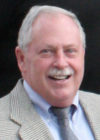HOME | ABOUT US | MEDIA KIT | CONTACT US | INQUIRE
HOME | ABOUT US | MEDIA KIT | CONTACT US | INQUIRE
The challenge of learning is a lifelong one for anyone in business—entry-level worker to CEO.

Several of my colleagues have developed unique publications designed to educate high-school students and their parents and counselors of educational options available after graduation. There was a time, not long ago, when not considering a college education, at least an associate’s degree, was pretty rare, at least in business circles. I believe the pandemic and labor shortages caused a trajectory unlike any we’ve seen are compelling students to pursue the trades.
College debt is a bigger issue today than ever; tuition increasingly is out of reach for many, opening the door for students to consider options.
As we prepared the 2025 Power Book, I had an interesting conversation with our editor, Dennis Boone, about publishing a high school and school district ranking not only comparing ACT scores but per-pupil expenditures, including subsidies. Neither the Kansas City, Mo., or Kansas City, Kan., districts made the Top Area School Districts ranking list, nor were either remotely close to the Top 25. Rather, they’re planted dead last on this ranking. Not only is this frustrating given the lifelong dialogue about challenges within these urban districts, but the toll is much more dramatic if we take into consideration the money funding the students in these districts.
I do not believe there is a private school, or any public school district in the region, that gets a lower return on its investment to educate students. I suspect this is a challenge in other urban metros, but surely given the resources dedicated to these students, they should yield a much higher ACT score and, one would hope, attain a more respectable record on college attainment.
I studied journalism and business and also obtained an education degree from Mizzou in the early ’80s and my teaching internship at Jefferson City High School was eye-opening. I worked under the direction of a terrific and highly-respected tenured teacher but it was apparent his lesson plans were a bit stale and the students weren’t engaged. I was only four years older than these students and a number of them had siblings I played against when Rockhurst established it’s bloodbath rivalry against the Jeff City Jays in 1976.
Like many I can be challenged with remembering names, so teaching three classes with about 25 seniors in each was a big lift. I worked hard to remember their names by correlating a characteristic about each. By the end of the third class I was able to name all but a couple. I should have not gloated: On day two in the first class, the students stood up, laughing, then darted around the room to occupy entirely different seats. Talk about a deflating moment.
But, I connected with them and they found the lesson plan interesting and engaging. After a few days, absences declined. They wanted to be a part of their teams and engaged in the curriculum. The experience of student teaching and serving as a volunteer track coach, with (of all people) Jays track and football coach Pete Atkins, who possessed more hatred for my alma mater than any living being, may have been one of the best learning experiences of my life.
A primary reason we purchased Ingram’s was to create a vehicle for learning—not simply by promoting educational needs in the K-20 realm and keeping executives informed on how developments in this region can affect their own companies and decision-making.
One example: We’re members of the Alliance of Area Business Publications and I served on the board for a decade. In 1999 I was tasked with recruiting a keynote speaker for our annual conference—that year in Washington, D.C. “Who are you going to recruit as our keynote, Sweeney?” I smiled and answered “Steve Forbes.” Undeterred by the scoffing, I reached out the next day and talked with two gatekeepers in Forbes’ office. I wasn’t encouraged I’d hear back but I laughed out loud the following day when a colleague announced, “Joe—Steve Forbes on line 2.” We had a nice visit and he was surprisingly collegial. “We subscribe to every one of the AABP publications as they’re inordinately connected in your regions—far more than we’ll be, say outside of New York and Chicago,” he said. “But I religiously read three each month: Crain’s New York Business, because it’s home. Crain’s Chicago Business, because it may be the best regional business publication in the country. And I read Ingram’s.” I laughed and ask why. “Ingram’s does a great job with executive summaries and it’s occasionally required reading for our writers.”
Well, Forbes committed to come to Washington after asking this one question. “How many U.S. readers do your publications have?” Six million, I answered. His response: “Why wouldn’t I come?” After all, he was a presidential candidate in 1996 and 2000; addressing our alliance would be good for his campaign.
We’re pleased to be a part of ongoing education with the executive and management community, doing our best to provide useful, actionable content for them. A generalized business magazine has a more challenging task holding the interest of the reader than does a trade journal. The key is developing and presenting useful content that piques the interest of farmers as well as executives in finance, law and other vital sectors.
I believe effective education is all about engaging students, teachers and, yes, business leaders, doing all we can to serve their respective interests.
Leave a Reply